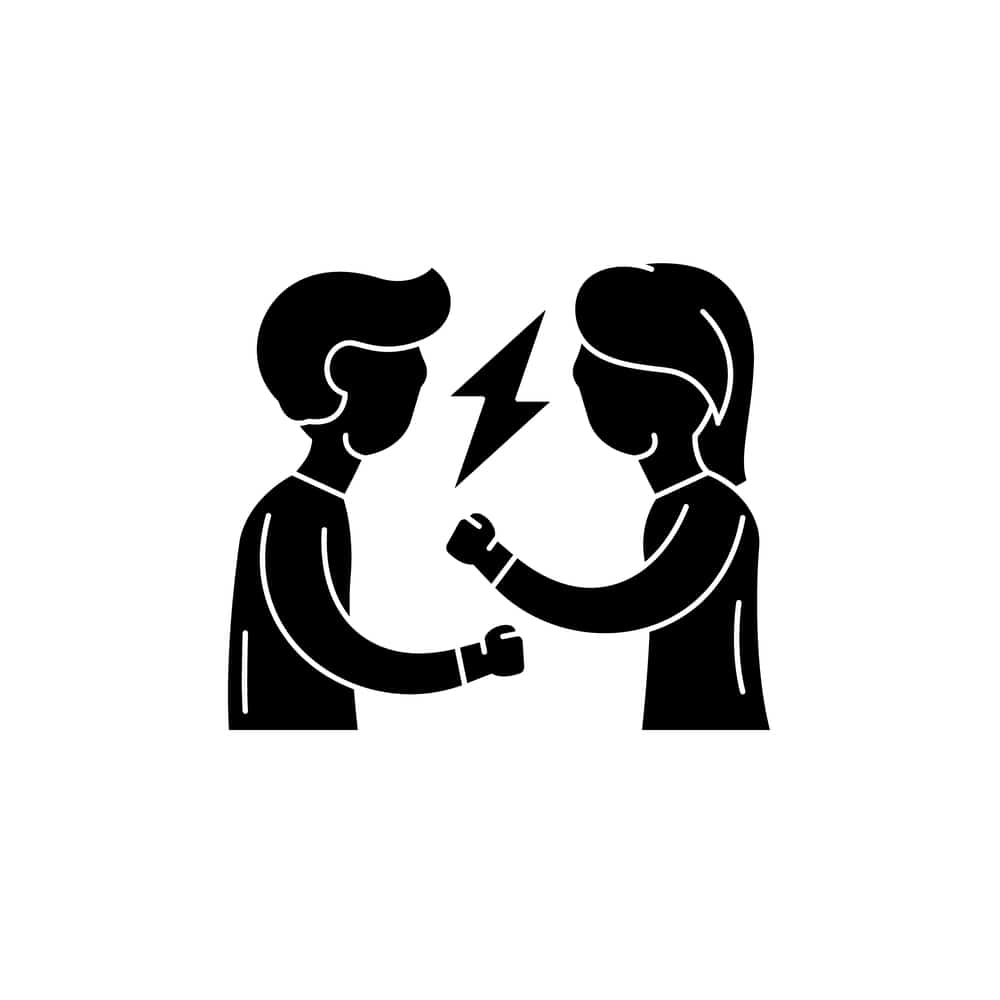INTJ and ESTP: Compatibility, Love, Marriage, and Romance
The introverted, deliberate INTJ and the outgoing, spontaneous ESTP may seem an unlikely pairing, but an INTJ/ESTP romantic relationship has the potential to be long-lasting and mutually satisfying. Sharing only one primary Myers-Briggs personality trait in common, partners in a successful INTJ/ESTP pairing must be willing to make some significant concessions.
Compatibility
Useful as psychological predictors are, there is no way to know what, exactly, attracts any two people to one another. While INTJs and ESTPs have very little common ground on which to build a relationship, many successful INTJ/ESTP relationships prove that they are overused; as the observation is, opposites sometimes attract.
It’s more than that, though; in the case of the successful INTJ/ESTP relationship, it might be more accurate to say that opposites who see in one another a chance for personal growth attract; there’s a lot INTJ and ESTP partners can learn from one another in a healthy relationship.
Summary Chart: INTJ and ESTP Compatibility vs. Possible Conflicts
| Compatibility | Possible Conflicts |
| Both value intellect | Significantly different values |
| Complementary communicative styles | Different needs regarding time alone |
| Different but complementary personalities | ESTP’s energy may exhaust INTJ |
| Both value objectivity | Different needs regarding the emotional connection |
Three Reasons why INTJ and ESTP are Good for Each Other
INTJs and ESTPs have little in common, but they can be very good for one another. In a healthy INTJ/ESTP relationship, each partner has a lot to offer the other in terms of new perspectives and tools with which to engage the world.
- They have complementary communication styles
- Each may benefit from the other’s worldview
- ESTP can help INTJ become more engaged in life
Different communication styles will undoubtedly present challenges for the INTJ/ESTP couple, especially early on, but partners in this pairing will likely find their styles complementary. The less expressive INTJ is often glad to let their more talkative partner carry the conversation.
INTJs and ESTPs have little in common regarding personality traits, which means each can benefit from the other’s wildly different, but still entirely valid perspectives. In a healthy INTJ/ESTP relationship, the ESTP can remind their INTJ partner to loosen up a bit once in a while and not be so structured. Conversely, the INTJ can remind the ESTP of the value of a bit of organization in one’s life.
Both partners in an INTJ/ESTP relationship can benefit from the other’s different needs regarding socialization. The INTJ can help the ESTP slow down and appreciate some time to relax, while the ESTP can help keep their INTJ partner from living too much “in their heads.”
Three Reasons why INTJ and ESTP are not Good for Each Other
Conflict arises in every relationship from time to time, and the very different INTJ and ESTP are bound to encounter their share. Some of the reasons INTJ and ESTP may not be good for each other are:
- Different values
- Different needs regarding organization
- Extroverted vs. introverted personalities
INTJs and ESTPs don’t share many common values, so the successful INTJ/ESTP pairing will need to be willing to “agree to disagree” sometimes for the sake of harmony in the relationship.
Different needs regarding structure and organization often prove a stumbling block for the INTJ/ESTP couple. The easy-going ESTP may be irritated by what they perceive as their partner’s nagging, while the more orderly INTJ is likely to become resentful as they find themselves doing the lion’s share of the housework.
Every relationship between an introvert and an extrovert will require some give-and-take. For the INFJ and ESTP, who are so different in many ways, it will likely require more than just a little.
Communication
When it comes to how and why they communicate, the INTJ and ESTP personality types are very different. INTJs prefer discussing ideas rather than things; they tend to focus on the “why” of a given topic, while the practical ESTP tends to focus more on the “what.” They prefer discussing verifiable facts to more abstract ideas.
Where are they Strong, and Why?
Though their communicative styles differ, INTJs and ESTPs often find them complementary. Usually, the less expressive INTJ falls into the role of listener, allowing their more communicative partner to do most of the talking. This can be a comfortable dynamic if the INTJ partner doesn’t feel marginalized or verbally steamrolled by their more talkative counterpart.
Where do they Have Problems, and Why?
Under healthy circumstances, INTJ and ESTP partners will likely find their communication styles complementary. When circumstances are less than ideal, the differences can be enough to cause even the most self-aware INTJ/ESTP couples some trouble.
If each partner isn’t sensitive to the other’s communicative style, the INTJ/ESTP couple is likely to feel as though they’re not on the same page when they may be, when one partner is focused on the “what” of a situation and the other on the “why,” they may feel like they’re talking at cross-purposes.
As mentioned earlier, the ESTP is generally the more verbally expressive partner in an INTJ/ESTP relationship. The introspective, more deliberate INTJ may find this dynamic suitable most of the time. Still, under stress, they may feel their ESTP partner isn’t giving them enough opportunity for consideration and to express their thoughts.
How can INTJ and ESTP Improve Communication?
The differences in communicative style between the INTJ and ESTP are significant but by no means insurmountable. For the INTJ/ESTP pairing to enjoy something approaching harmonious communication, each will have to be willing to make some concessions.
For the sometimes over-expressive ESTP, this means resisting the urge to fill every lull in a conversation. Just because the INTJ partner is usually content to take the copilot’s chair in discussion doesn’t mean they don’t have valuable input to share. Nobody enjoys feeling marginalized, and the INTJ’s occasional silence shouldn’t be mistaken for agreement; often, INTJs prefer to deliberate before offering an answer.
The INTJ partner must also make some concessions in a healthy INTJ/ESTP relationship. They’ll have to emerge from their comfort zone from time to time and be willing to enter into a lively debate rather than silent deliberation.
Where do they Connect, and Why?
Despite their many differences, the INTJ and ESTP often see in one another qualities they themselves would like to exhibit. Though the energy of the ESTP may initially put them off, an INTJ is likely to be intrigued by the ESTP’s seemingly endless capacity to engage socially and have fun.
On the other hand, the action-oriented ESTP will likely appreciate the INTJ’s slower, more deliberate, and structured perspective, at least sometimes. The INTJ can help the sometimes haphazard ESTP enjoy the benefits of slowing down once in a while to consider the next adventure.
As their personalities differ in various ways, it may well take a shared interest or common hobby to connect the INTJ and ESTP, at least initially.
INTJ and ESTP: Values
Regarding what they value, the INTJ and ESTP will likely find they have little in common. INTJs are more likely to appreciate innovation and change, whereas ESTPs tend to defend the status quo.
Three Things an INTJ Values
- Improvement through innovation
- Objectivity and reason
- Achievement and hard work
The idealistic INTJ assumes that systems and institutions can be improved through innovation and hard work. INTJs often value science and technology as tools with which to improve the world.
INTJs don’t approach these lofty goals without first employing logic and reason, values they share with their ESTP counterpart.
Three Things an ESTP Values
- Reason and objectivity
- Inherited wisdom
- Enjoying life
Like their INTJ counterpart, the ESTP highly values objectivity, reason, and logic. Action-driven and expressive, ESTPs tend to employ these traits to defend the existing order. They appreciate the collected wisdom that has served humanity thus far and are reticent to change existing, time-tested institutions without very sound reasons.
ESTPs value having fun more than their introspective, contemplative counterparts, a trait their partners are likely to find attractive.
How do their Values Match Up?
The values of the INTJ and ESTP differ widely in many regards. Both value reason and logic and are, therefore, likely to find the mental acuity of the other attractive. Generally speaking, this is where their values part ways.
A healthy and successful INTJ/ESTP couple must be willing to “agree to disagree,” perhaps more so than many other personality pairings.
Love Language/Love Style
Despite being different in many ways, there is some overlap in how INTJs and ESTPs show their love. Both express affection by sharing quality time, for example.
Ways INTJs Show Their Love
Typically, INTJs show their love in the following ways:
- Sharing quality time
- Acts of service
- Physical touch
Like their ESTP counterparts, INTJs show their love mainly in nonverbal ways. As introverts, INTJs must be protective of their “alone time.” For this reason, the mere act of spending time with another is a significant show of love from an INTJ.
Also, like their ESTP partners, INTJs show their love by performing acts of service for their partners. Following quality time and acts of service, physical touch seems to rank highest among the ways the INTJ expresses affection.
Ways ESTPs Show Their Love
An ESTP typically shows love in the following ways:
- Acts of service
- Gift-giving
- Spending quality time
Though verbally expressive, the normally extroverted ESTP can be reticent to discuss feelings, preferring to talk about things. As such, the ESTP likes active shows of love, such as gift-giving and performing services intended to make their partner’s life easier or more joyful.
Spending quality time with their partner is another way ESTPs tend to express their love.
INTJ and ESTP in Bed
INTJ and ESTP partners have the potential to enjoy an intense and mutually-satisfying sex life. Both crave intimacy during the act, if for slightly different reasons. For the “live in the moment” ESTP, it’s all about fully engaging in the experience for the experience’s sake. For INTJ, the desire for intimacy is more about forming a deep connection with their partner.
INTJ and ESTP Couples/Marriage
INTJ Male and ESTP Female
Some sources claim ESTP females make up only three percent of the population, making them extremely rare. The INTJ male/ESTP female relationship has the potential to be a long-term, mutually satisfying one, provided the outspoken, willful ESTP female gives her less-expressive INTJ partner ample opportunity to express himself.
Conversely, the introspective, less-expressive INTJ male will need to set some boundaries regarding communication and the need for time alone.
INTJ Female and ESTP Male
This pairing also has the potential for long-term happiness. There is a danger, though, that the INTJ female may see her assertive, willful counterpart as overbearing or domineering.
There’s also the possibility the ESTP male may see his less outspoken partner as indecisive. Worse, the INTJ’s lack of an immediate response may be mistaken by the ESTP male for agreement when his more deliberative partner is still considering the issue at stake.
INTJ and ESTP Conflicts
Every relationship can expect to encounter its share of conflict, and the INTJ/ESTP pairing certainly will. If the INTJ/ESTP couple can navigate these obstacles successfully, they have the potential to help one another grow as individuals and as a couple.
Possible Areas of Conflict (and Why)
Conflict between INTJs and ESTPs can arise for various reasons; the following are three of the most common:
- Different needs regarding socialization vs. time alone
- Lack of common values
- Organization and scheduling disputes
ESTPs are typically high-energy, highly social people. The INTJ, on the other hand, prefers to balance socialization with a healthy amount of time alone. These differing needs for socialization can cause disharmony in an INTJ/ESTP couple, especially when first dating.
No matter how much an INTJ/ESTP couple enjoys one another’s company, there will inevitably come a time when they realize they share little in terms of values. A mutual willingness to attempt to see things from their partner’s perspective is a prerequisite to an INTJ and an ESTP having a successful long-term pairing.
One value difference that’s bound to cause some level of disagreement has to do with organization. INTJs place a higher value on organizing and scheduling than their ESTP counterparts.
How do INTJ and ESTP Resolve Conflict?
To resolve the inevitable conflicts that will arise in the INTJ/ESTP relationship, compromise and understanding on the part of both partners will be needed. The more expressive and willful ESTP will likely want to resolve conflicts quickly and will need to curb this desire.
INTJs, for their part, need to establish some reasonable boundaries with their ESTP partners lest they find themselves relegated to the margins of important conversations. The INTJ/ESTP couple that can weather conflict has tremendous potential for growth.
How do INTJ and ESTP Build Trust?
ESTPs are risk-takers who tend to deal squarely with others. Because of this, ESTPs are generally quicker to trust than their INTJ counterparts and faster to forgive when a minor breach of trust is committed. The ESTP is also a good reader of people’s motives, which gives them a good sense of who may be worthy of trust.
For the INTJ, trust doesn’t come as easily. A personality type that prefers independence and self-reliance, INTJs don’t instantly trust someone just because they enjoy their company or find them attractive. The trust of an INTJ has to be earned, one precious bit at a time, and one significant breach may be all it takes to lose it.
INTJ and ESTP Friendships
It may take a common interest or pastime to bring these two significantly different personality types together, but INTJs and ESTPs have the potential to be good friends.
INTJ vs. ESTP: Approach to Friendship
As natural leaders, ESTPs often exude a natural charisma that tends to draw others into their circle. Affable and fun, ESTPs are all about finding enjoyment at the moment without too much consideration for the future. In a friend, the ESTP is generally looking for no more than a person with whom they can share some of life’s adventures.
INTJs approach friendship very differently than ESTPs. Though often seen as loners, INTJs can form valuable, long-lasting friendships. Unlike the ESTP, who’s likely to have many friends, the INTJ tends to have fewer but closer friendships.
INTJ and ESTP Friendship Dynamics
The introverted, intuitive INTJ and the extroverted, sensing ESTP see and act within the world in very different ways. In some cases, the differences in personality will be too wide to bridge. For those INTJs and ESTPs that see in one another opportunities for personal and mutual growth, these differences can, in fact, be mutually beneficial.
What Makes INTJ and ESTP Good for Each Other as Friends?
INTJs and ESTPs have very different perspectives on the world, so each can benefit from the other’s considered point of view when making difficult decisions. INTJs can help the sometimes haphazard ESTP become a bit more structured, while the fun-loving ESTP reminds their INTJ friend to find enjoyment in their life.
Can INTJ and ESTP be Close Friends?
Personality is a complex subject, and while psychological labels are necessary and useful, there’s no way to predict how well any two people will get along, regardless of their personality type. There is a lot of potential for conflict between INTJs and ESTPs, but if they genuinely enjoy one another’s company, there’s no reason they can’t maintain a close personal friendship.
What are some areas that Might Cause INTJ and ESTP Problems as Friends?
Generally speaking, ESTPs don’t take commitment as seriously as INTJs. This can cause problems, especially for the INTJ, for whom trust is already an issue. The successful INTJ/ESTP friendship will likely involve getting past some early misunderstandings.
INTJs look for a deep connection with their friends, whereas ESTPs are more likely to base their friendships on a series of shared experiences. This mismatch in values may cause the INTJ friend to feel undervalued or underappreciated and the ESTP partner to feel confused about why.
Different needs regarding organization and socialization may also prove a stumbling block for the INTJ/ESTP friendship. The INTJ may feel overwhelmed by their more active and expressive friend, and the ESTP may misinterpret his INTJ friend’s need for time alone as disinterest.



